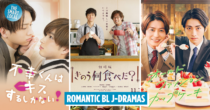Cherry blossom viewing guide
Spring is upon us, and in Japan, this also means that their famous sakura season is here. Prior to the onset of Covid-19, people from all over the world would flock to the land of the rising sun to catch a glimpse of the gorgeous blooms.
The story of cherry blossoms
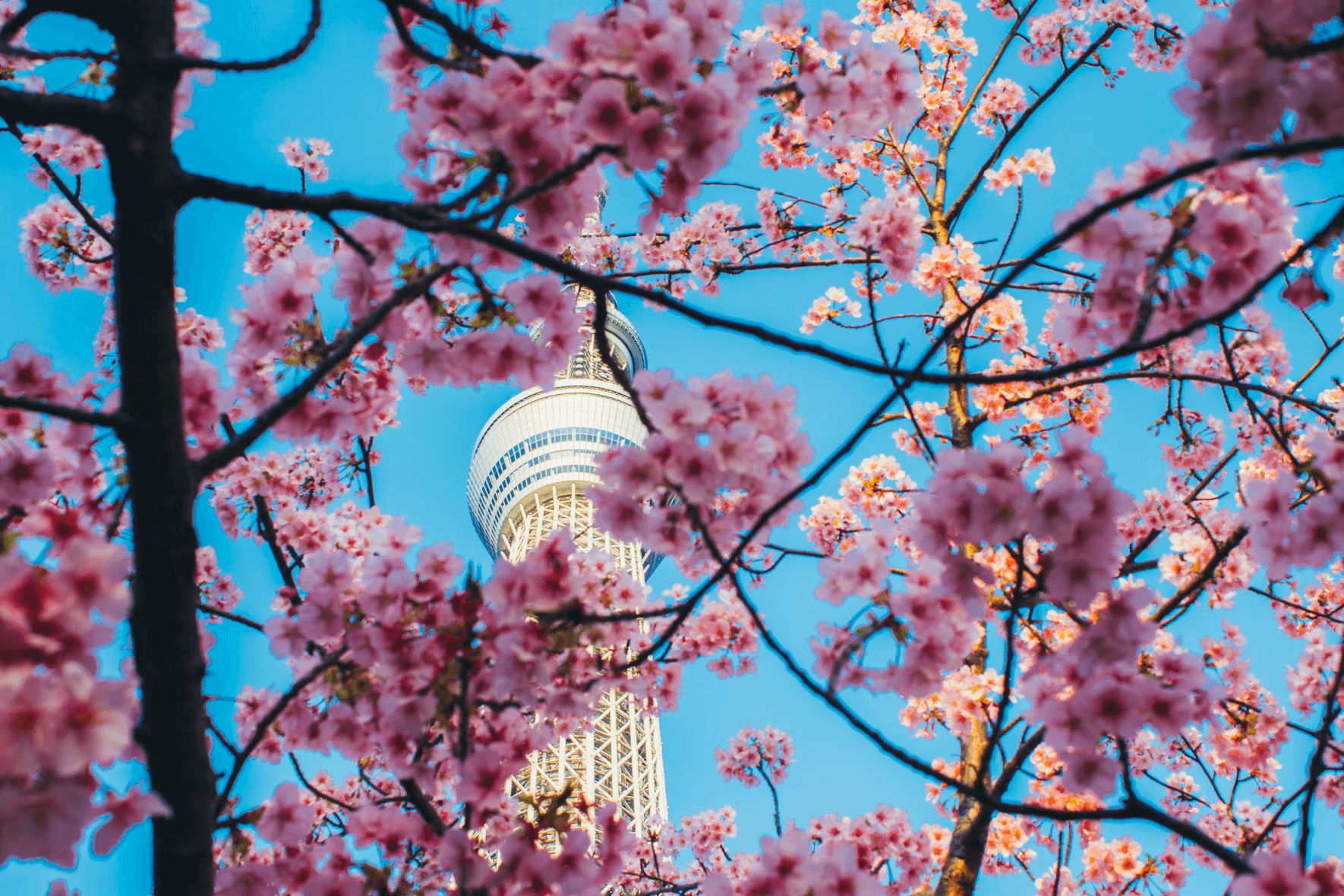 Image adapted from: Atul Vinayak
Image adapted from: Atul Vinayak
Cherry blossoms, or sakura (桜), are flowers that are native to countries in East Asia, but they’ve come to be considered the national flower of Japan.
The species of cherry blossoms most commonly found in Japan don’t actually occur in nature. Rather, they were specially cultivated to be double-flowered, grow fast, bear many large flowers, and have a stronger fragrance. Naturally occurring cherry blossoms, in contrast, have a barely discernible scent.
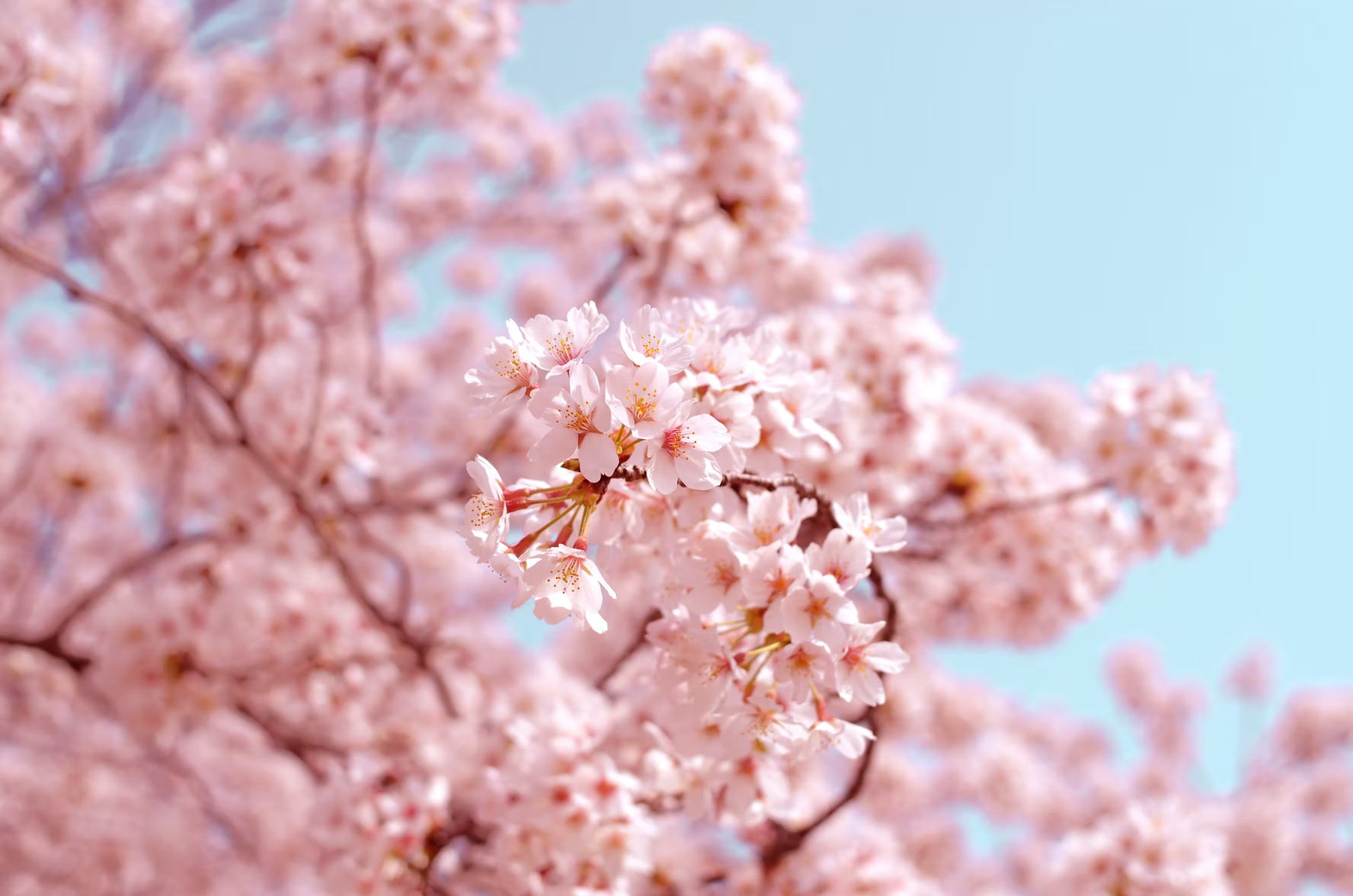
Image credit: AJ
Sakura blooming season in Japan
Cherry blossom season in Japan generally occurs during the first half of the year; the exact period is determined by the climate of the area you’re in. The milder the climate, the earlier the sakura will bloom.
In more tropical parts of Japan, such as Okinawa, cherry blossoms can bloom as early as January, whereas in the northern island of Hokkaido, the flowers could bloom as late as May. Tourist hotspots such as Tokyo, Kyoto, and Osaka typically see cherry blossoms blooming in late March or early April.
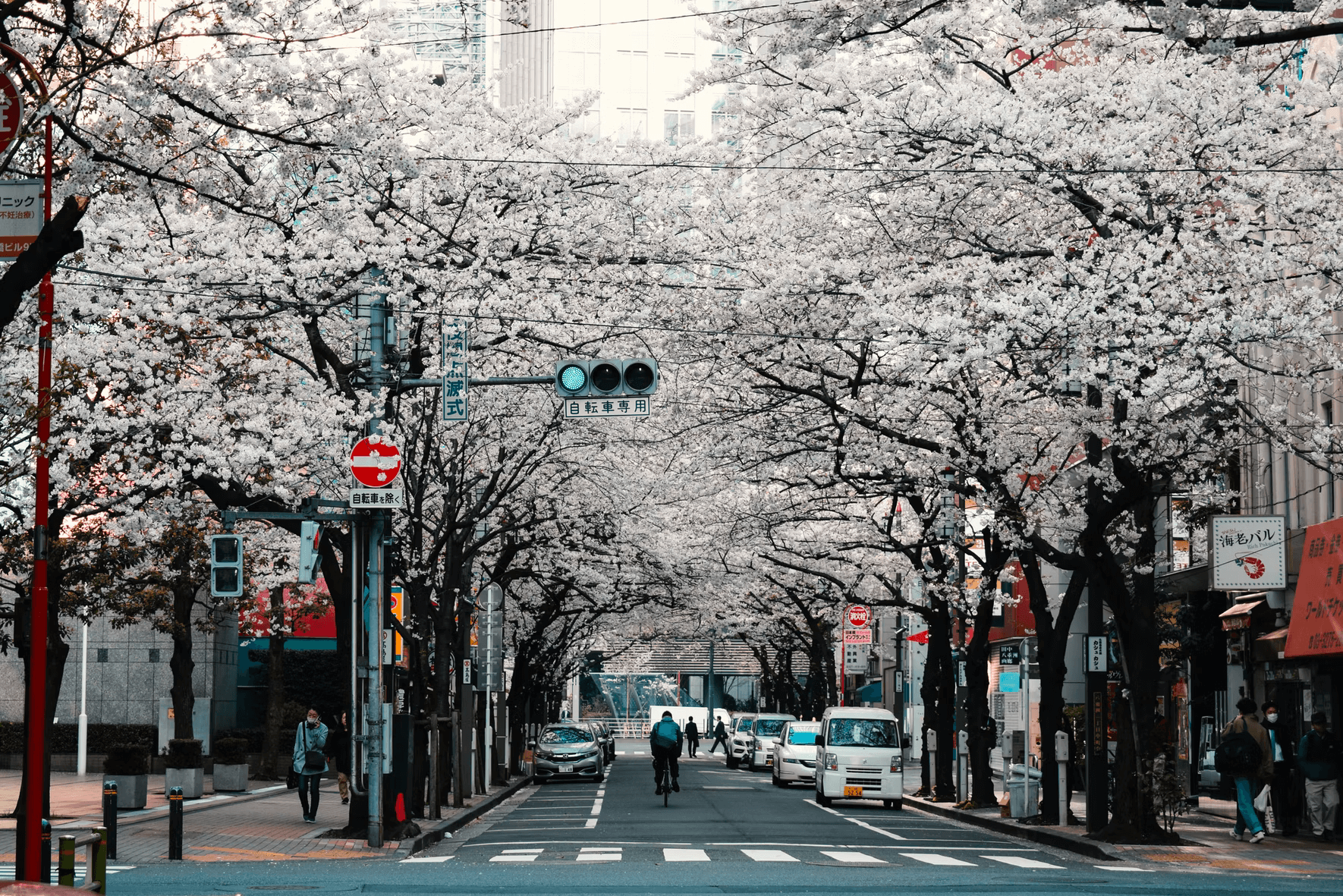
Image credit: Agathe Marty
Of course, the timing of the cherry blossoms blooming differs from year to year. If the weather prior to hanami season is nice and mild, the flowers will bloom earlier; if the weather is cold and chilly, the flowers bloom later.
Kaika to mankai – The cherry blossom cycle
The cherry blossom season is notoriously short. Full bloom, or mankai (満開), is usually reached within a week after the first bloom (kaika; 開花), which makes it difficult to catch the hanami (花見) season.
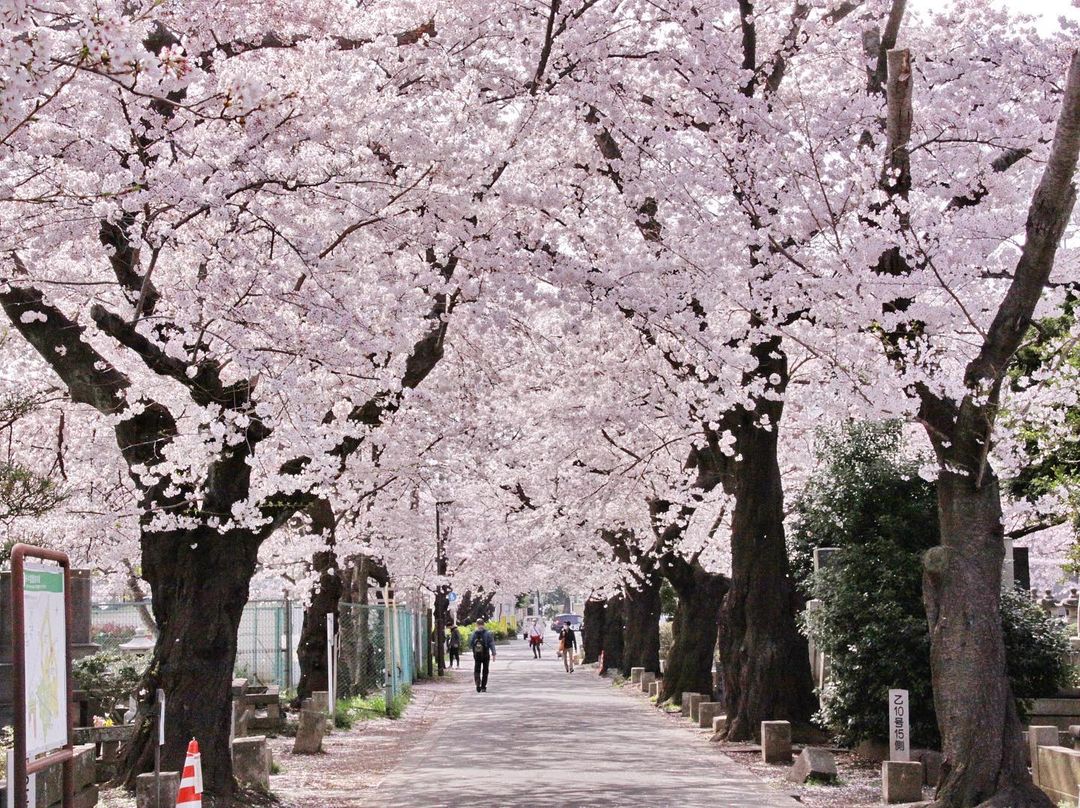
Image credit: @akibeya
A week after mankai, the cherry blossoms will start falling to the ground. If the weather is particularly windy or rainy, the blossoms will fall even earlier and faster.
Cherry blossoms are particularly important to the Japanese, so much that every year, the weather forecast includes a daily update on the “cherry blossom front”, or the path of the blossoming cherry blossoms, as it moves northwards.
What to do during cherry blossom season
1. Hanami parties
Hanami, which means “flower viewing”, is the practice of appreciating and viewing cherry blossoms during springtime in Japan.
Originating as far back as the Nara period (710 – 794), the practice was initially centred on the plum blossom, as was common in China.
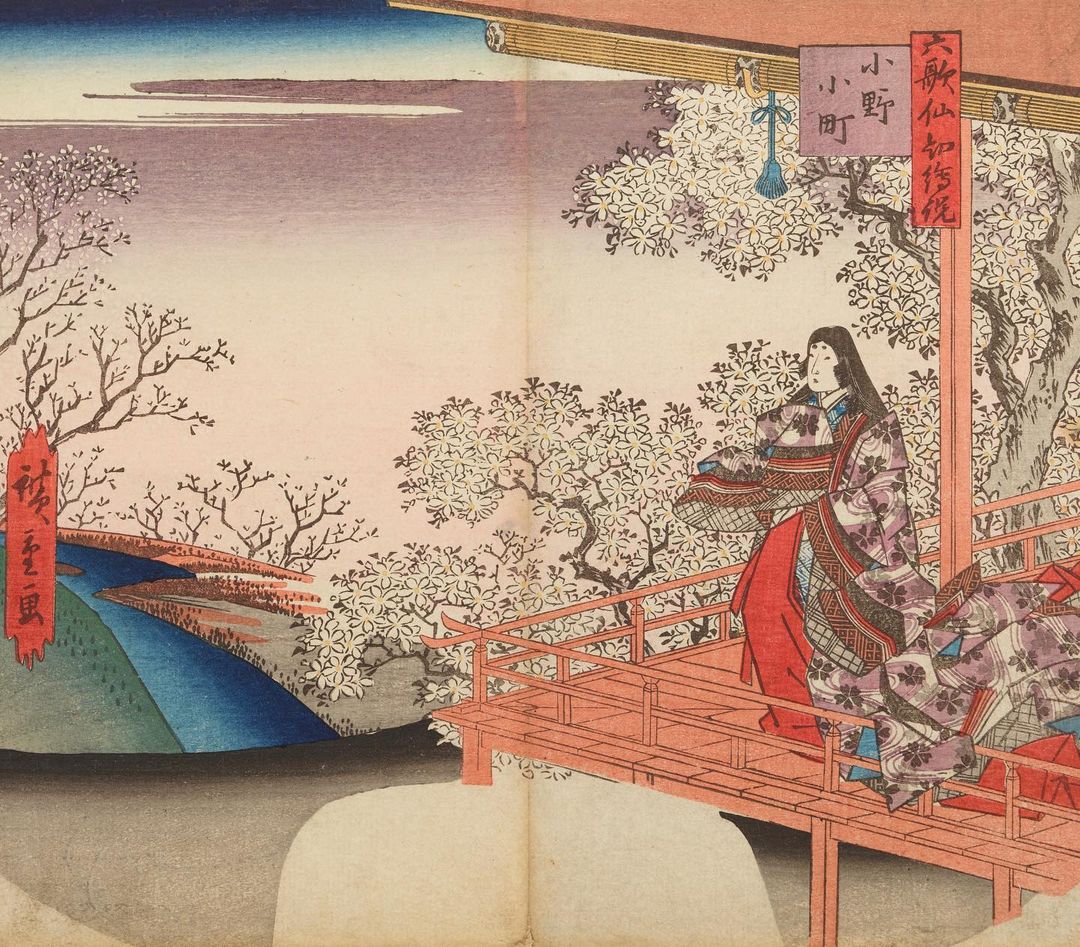
Heian period poetess Ono no Komachi, as drawn by artist Hiroshige.
Image credit: @hiroshigemuseum
Later on, the Japanese started noticing the cherry blossom during the Heian Period (794 – 1185). Kyoto’s Imperial Court would hold elaborate feasts and viewing parties under cherry blossom trees; however, only the upper class had the “right” to this practice.
Presently, everyone can hold hanami parties during cherry blossom season. People crowd under cherry blossom trees in parks and gardens all over Japan, and it is considered an essential part of Japanese culture today.
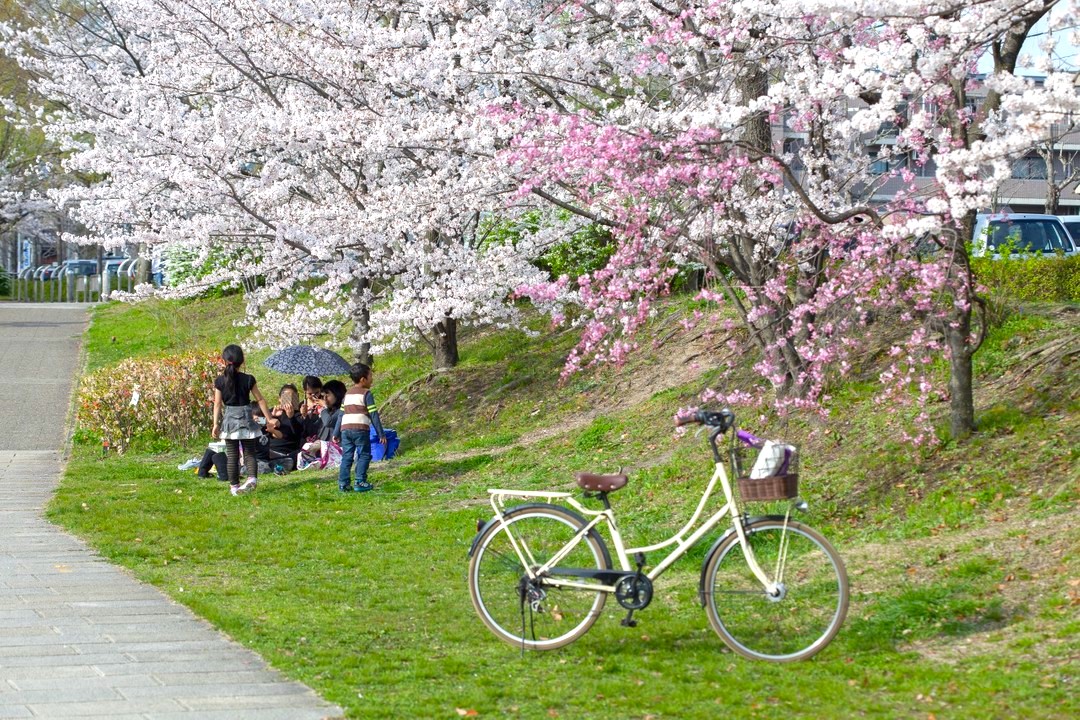
Image adapted from: @slowkyoto
During hanami season, people reserve their chosen spots – especially in famous cherry blossom locations – with picnic mats early in the day, way before the actual party. Of course, the Japanese are a polite bunch and won’t leave a picnic mat unattended; usually, someone will remain there while waiting for everyone else to arrive.
Some parks actually ban the practice of reserving spots with picnic mats during hanami season, so as to prevent other park-goers from being deprived of prime viewing spots.
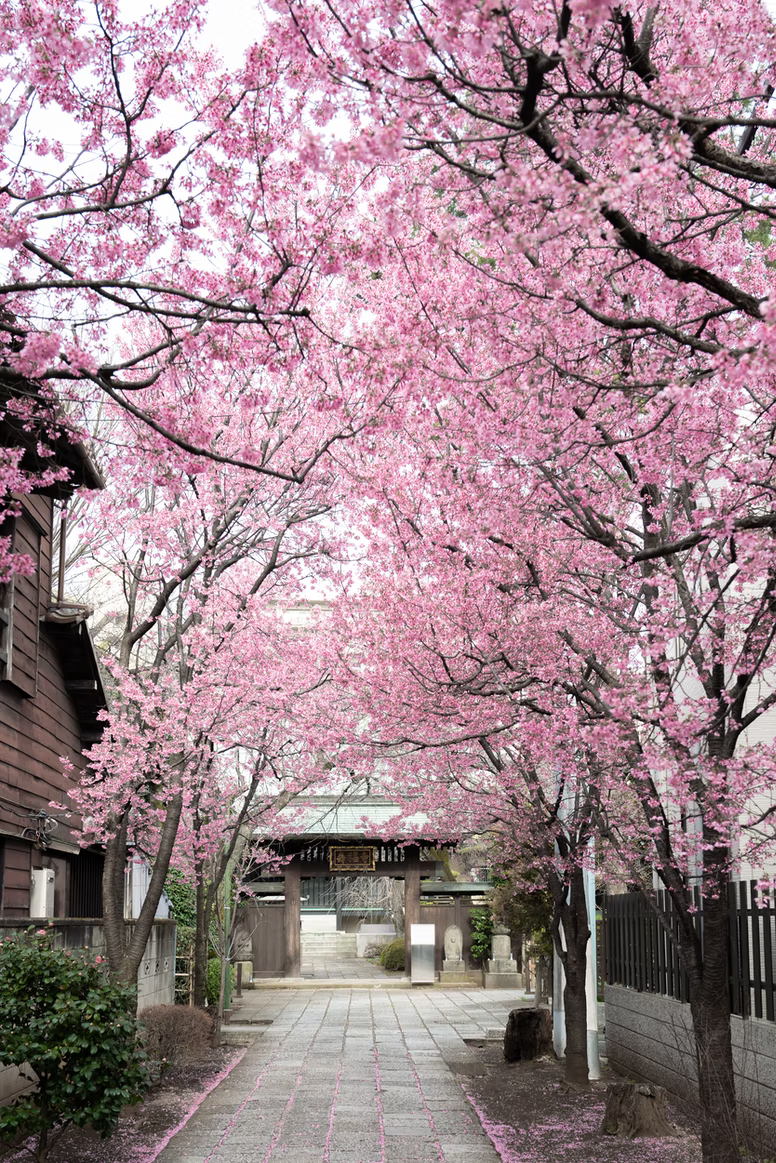
Image credit: Lika Watanabe
A recommendation for getting perfect hanami viewing spots would be to visit parks that are less popular with tourists, or to visit parks in more rural areas of Japan.
Alternatively, instead of having a picnic in the park, one could take a walk through the parks. It certainly makes for a more romantic experience, just enjoying each other’s company while taking a serene stroll with your partner.
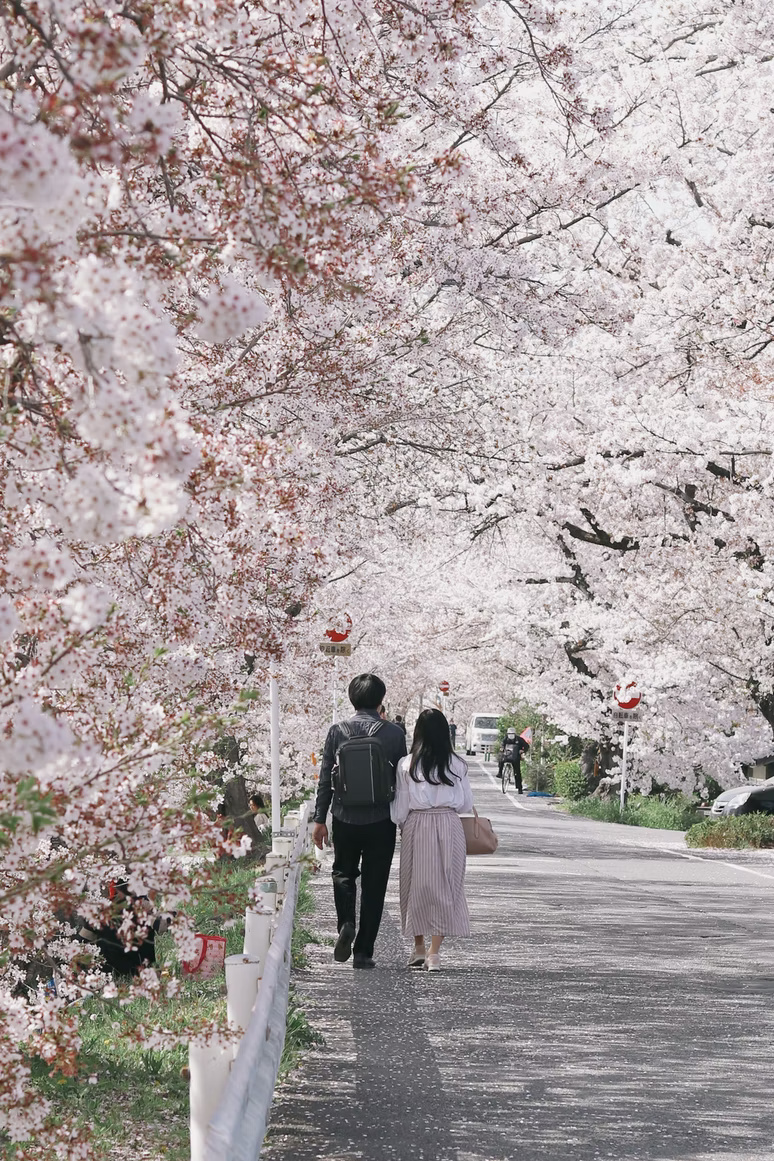
Image credit: Amy Tran
2. Buy hanami bento & snacks
The Japanese are known for their delicately decorated sweets and adorable bentos; hanami season is the perfect excuse for them to come up with more themed food.
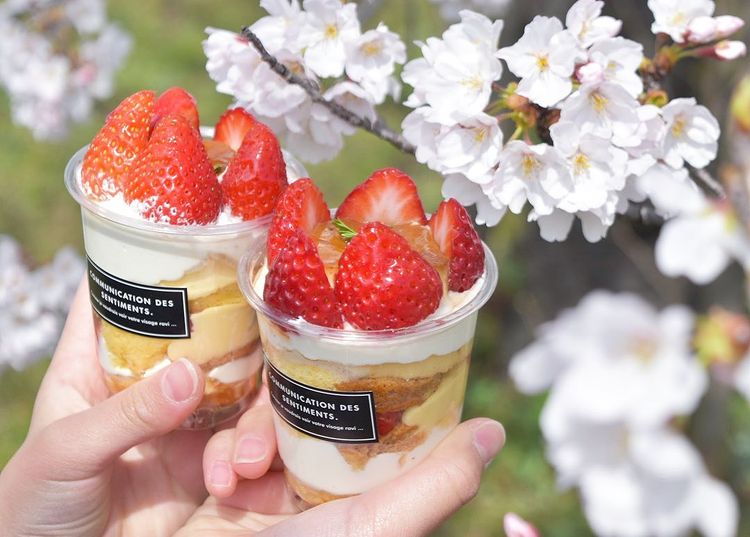
Image credit: @my_favourites_j_
Street vendors around parks sell pink-coloured or sakura-flavoured snacks and desserts. Cherry blossom enthusiasts wait for their annual partaking in cherry blossom-themed food with sakura petals floating through the air, wafting their sweet fragrance all around.
Sometimes, actual cherry blossom petals are incorporated into the making of such food items; vendors typically pickle the petals and add it into their dish to give it that lightly fragrant flavour.
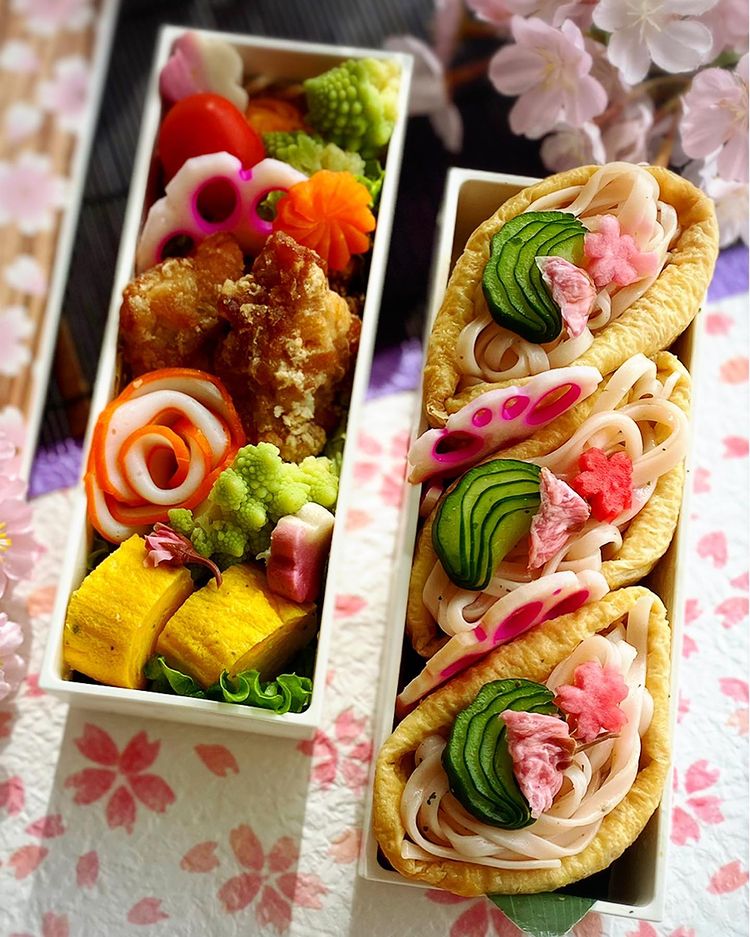
Image credit: @koyagi_gohan
If you’re feeling hardworking, you could also endeavour to make your own hanami bento. Experiment with all the cute things you could make with the pastel theme in mind.
3. Dress up in gorgeous kimonos
Another common practice during sakura season is to dress up in a kimono and walk through the cherry blossom trees, as if you were a flower yourself.
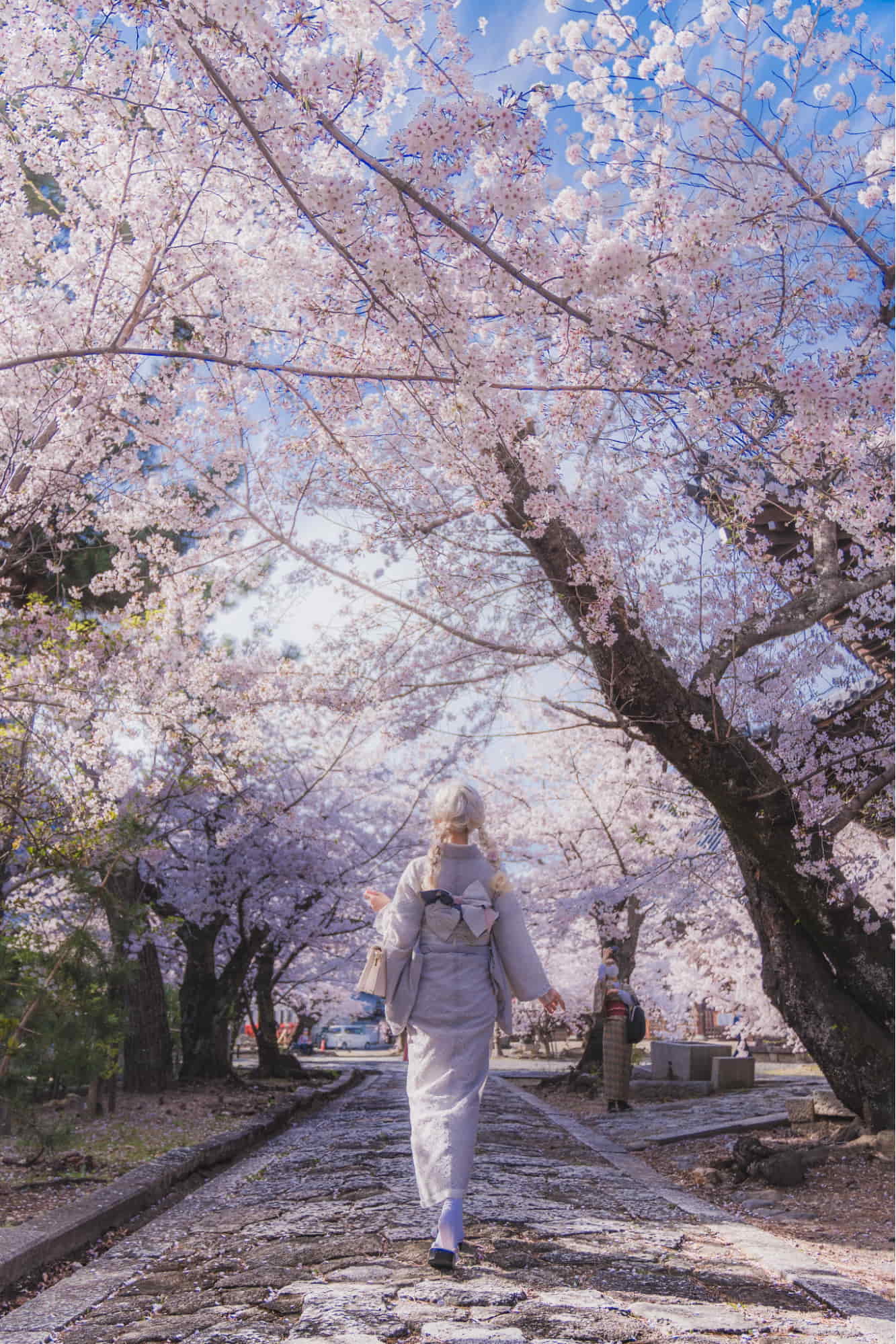
Image credit: Zhaoli JIN
Popular parks for hanami-viewing tend to have kimono-rental vendors nearby, such as Kimono Sakaeya near Yoyogi Park or Kosode Kimono near Ueno Park. Prices start from as low as ¥4,700 (~USD37.52) for the simplest kimono. The more intricate the design and make of the kimono, the more expensive the rental.
4. Enjoy the festival performances
With the sakura season comes spring festivals where local musicians and dance troupes get together to put on a performance for the people.
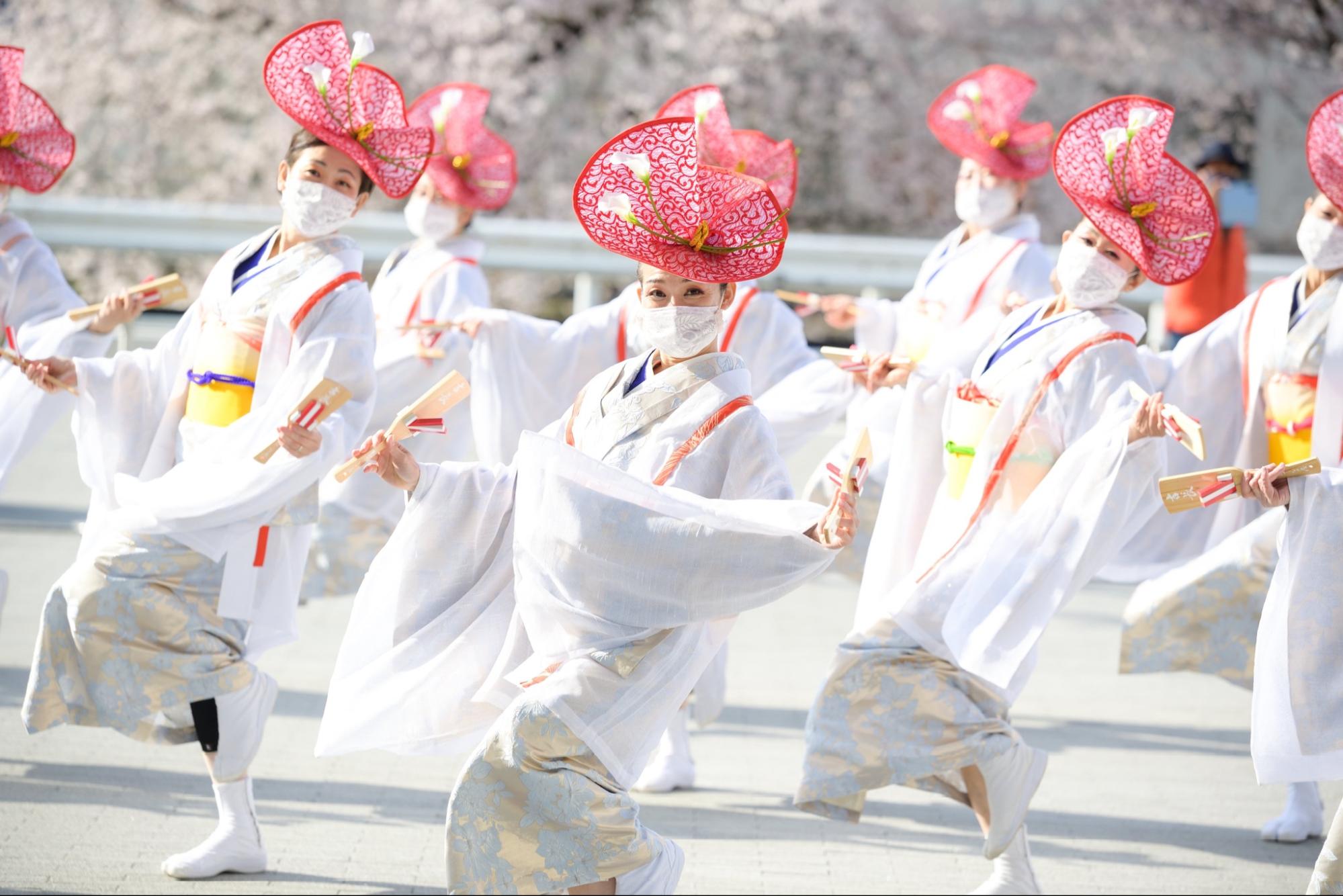
Yosakoi Naruko dancers performing at the 2022 Spring Festival
Image credit: @Kotachanpe4351
Apart from professional performers, sometimes the public will bring along their own instruments and play a few tunes from the comfort of their own picnic mat. Other park-goers may even join in by singing or playing instruments of their own.
5. Write cherry blossom-inspired poetry
Just like in the days of the samurai, some people are so moved by the sight of cherry blossoms that they feel compelled to put pen to paper and write a few lines of poetry dedicated to the season.
A popular format of Japanese poetry is the haiku, a form of poetry consisting of three lines. Each line has a set number of syllables, with five in the first and third line, and seven syllables in the second.
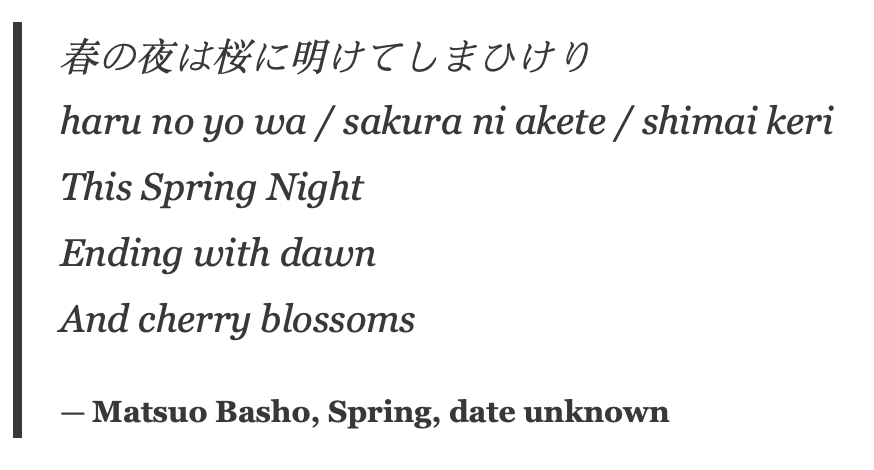
A sakura-inspired haiku by famous Japanese poet Matsuo Basho.
Image adapted from: MatsuoBashoNoHaiku
6. Visit a shrine to pray for peace & prosperity
A good practice during hanami festivals is to visit the local shrine to pray, be it for good luck, a new partner, or just general blessings.
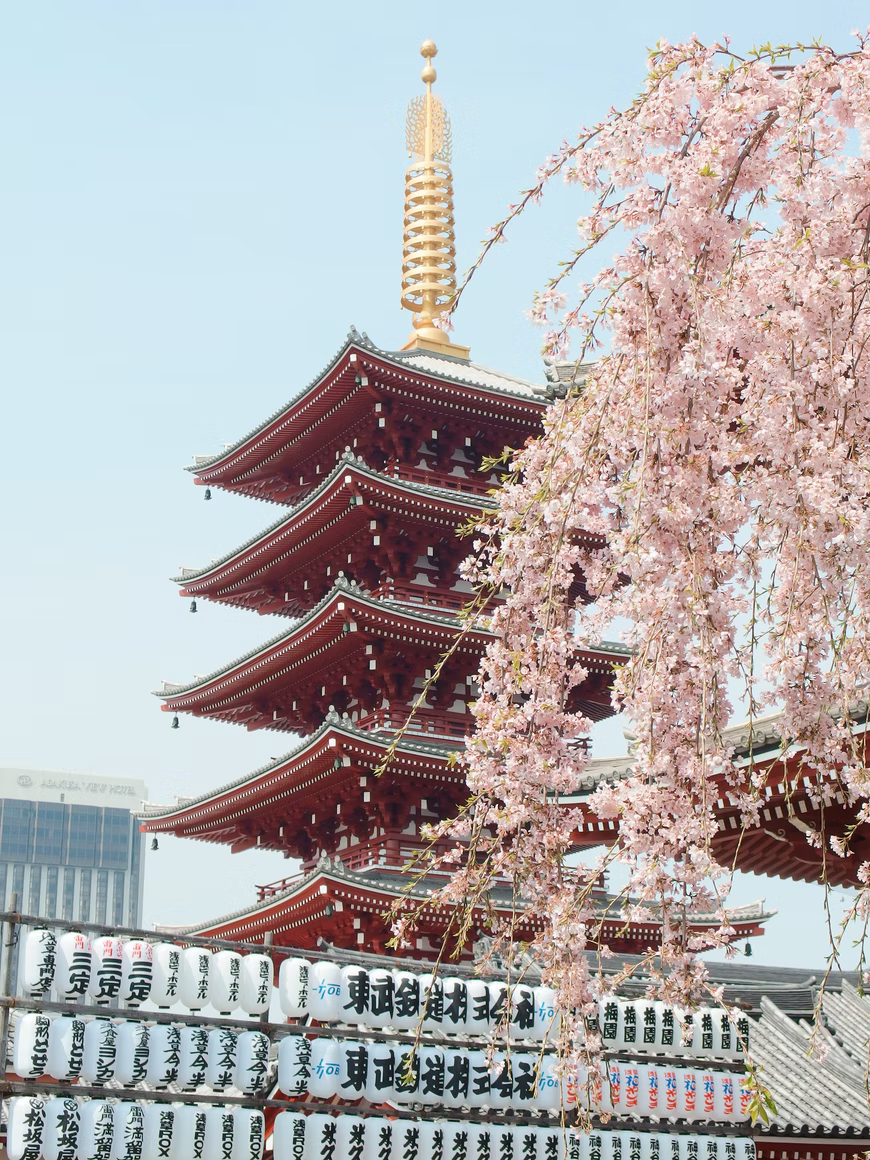
Image credit: Yu Kato
The start of a new season is as good a time as any for one to put in a good word with the deities. New beginnings, they say. Popular shrine destinations include Tokyo’s Meiji Shrine near Yoyogi Park, as well as Aichi’s Tatsuki Shrine near Okazaki Park.
Things to bring for a hanami picnic
When going for a hanami picnic, one should make sure that one is always prepared – you’re likely to spend quite a long time at your chosen spot.
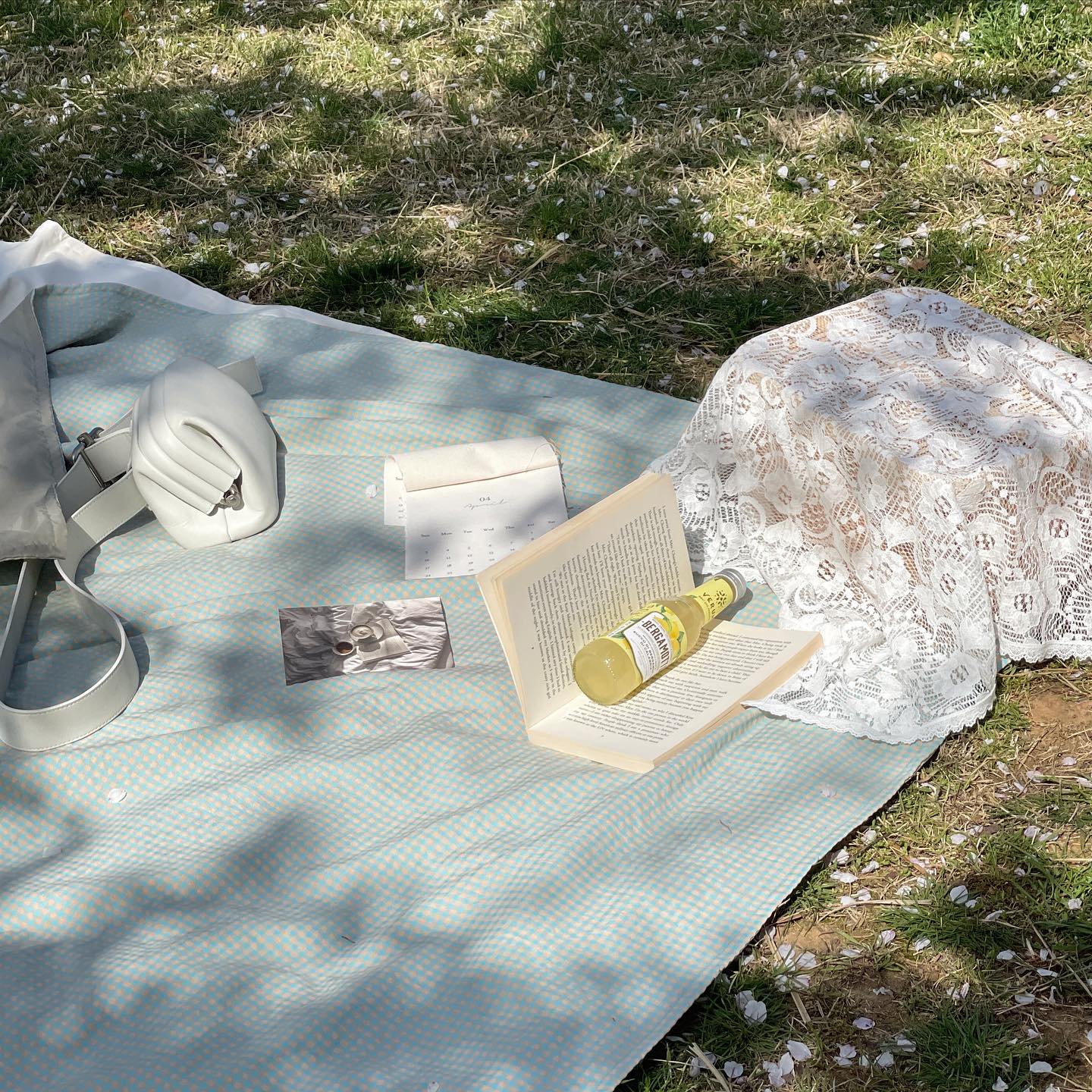
Image credit: @week.nic
Here’s a quick packing list:
1. A warm jacket or outerwear
Don’t let the flowers and sunshine fool you – springtime in Japan is still pretty chilly, so make sure you have something to keep you warm throughout the day. The evenings can get even colder, especially in outdoor areas such as parks and gardens.
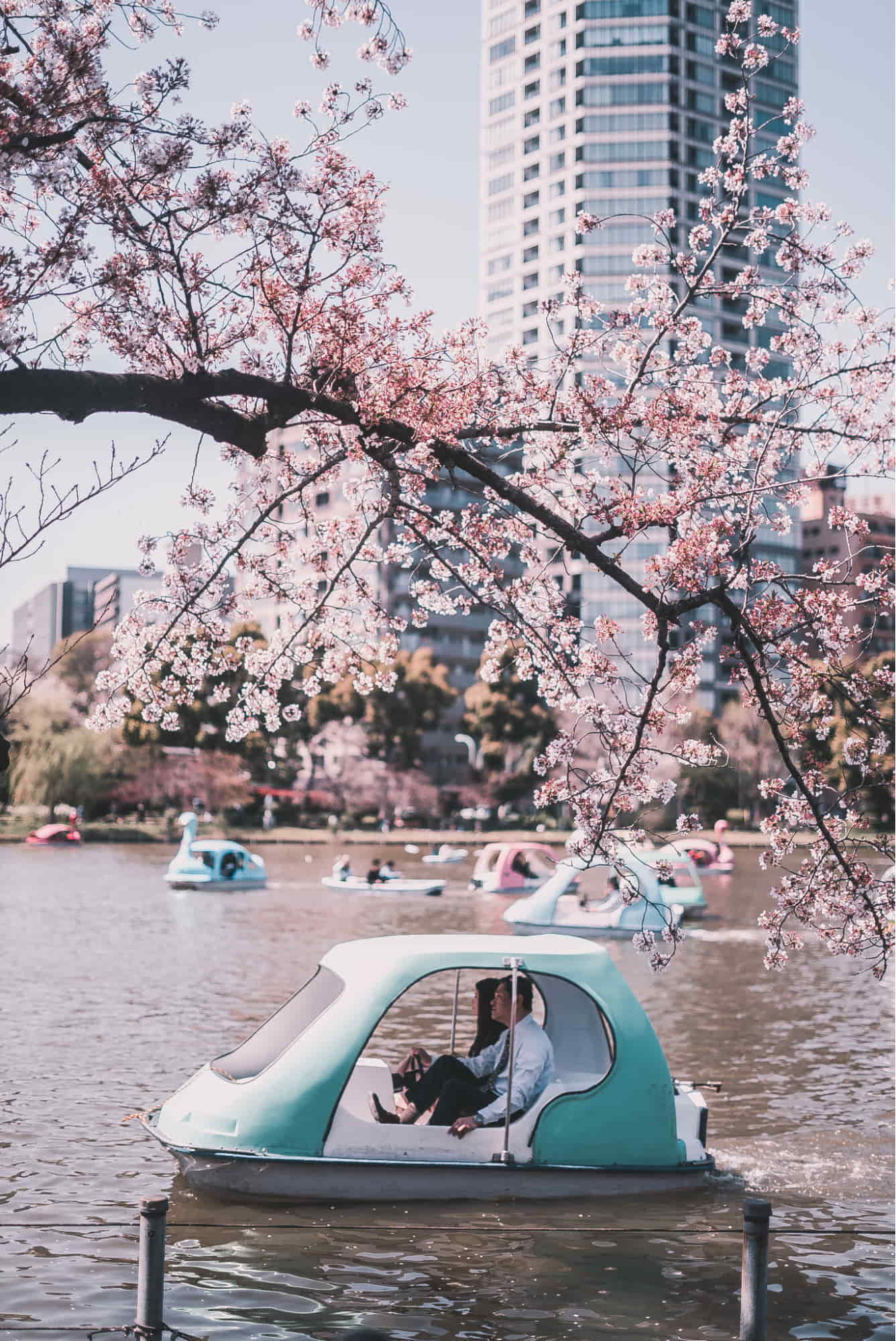
Image credit: Redd
2. A large picnic mat
You’ll need ample space for all your belongings – food, drinks, instruments, and anything else you can think of. And if you’re planning to hang out with friends that day, you’ll need to accommodate your entire gang, so choose wisely when buying a picnic mat for hanami.
3. An umbrella
The weather during springtime can be all sunshine and smiles, but it can also be rainy, so do bring umbrellas and raincoats in case of inclement weather.
4. Disposable utensils, cutlery & garbage bags
When out on a picnic, it’s important to bring along some disposable utensils, bowls or plates, as well as garbage bags to make cleaning up a lot easier. In Japan, rubbish bins are difficult to find, so garbage bags are particularly useful.
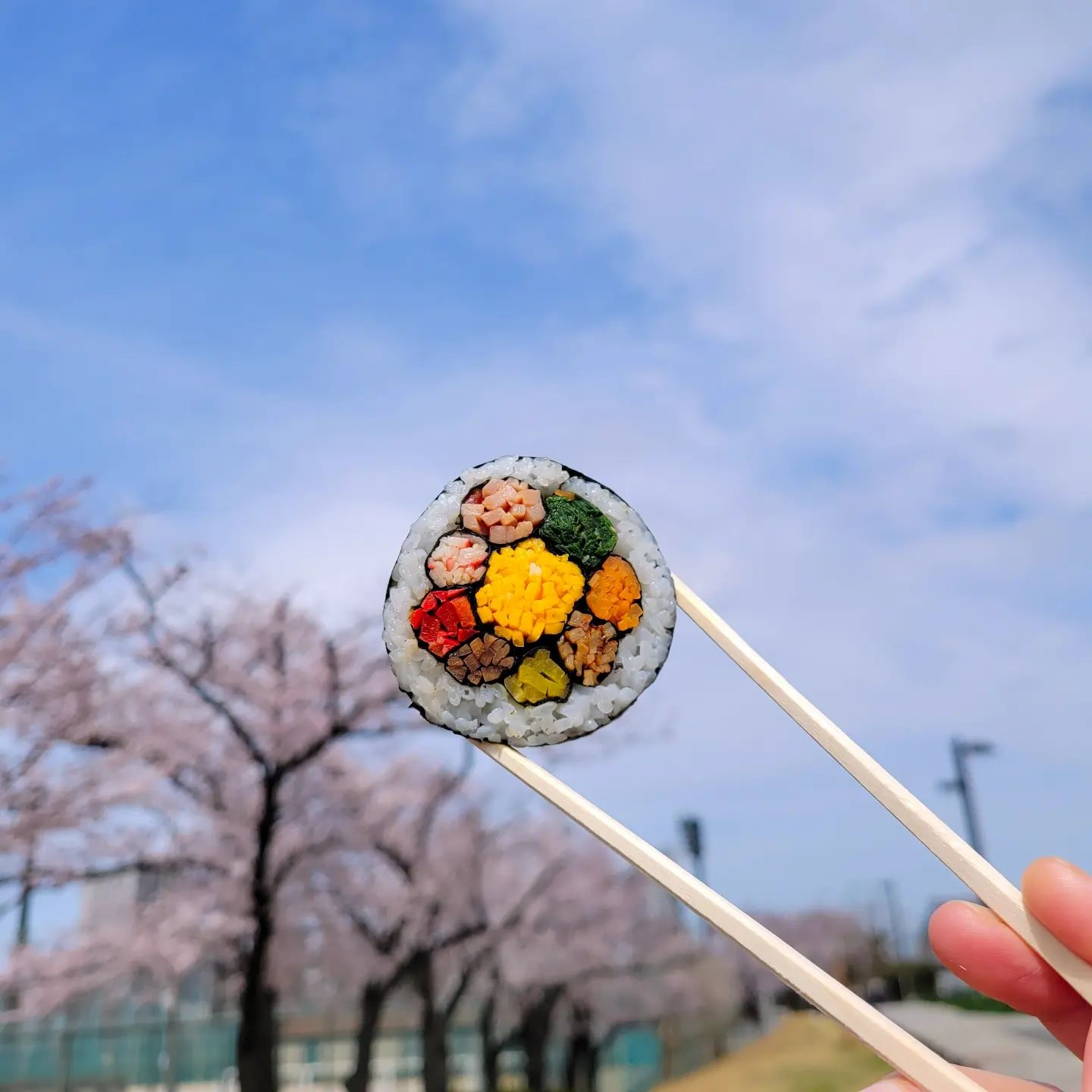
Image credit: @cookku506
5. A book or something to entertain you
If you’re the designated person responsible for reserving the hanami spot, you’d want to have something to occupy you while you wait for everyone to arrive. Or if you’d just like a peaceful time under the cherry blossoms, a book is a good companion.
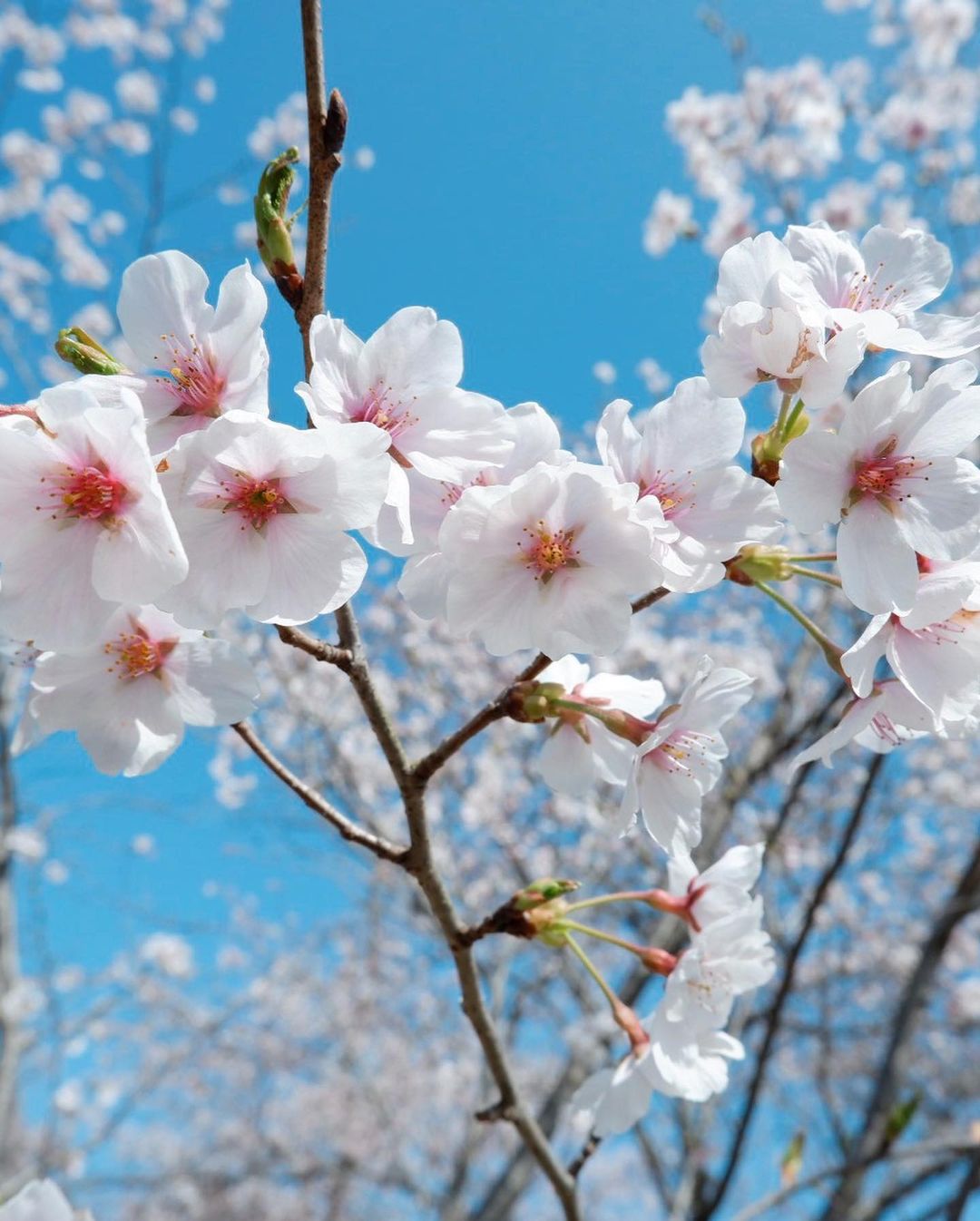
Image credit: @iammisslilac
You might even want to bring along a Nintendo Switch if you own one; games such as Animal Crossing hold seasonal events during sakura season, and it’ll be extra immersive if you play them while surrounded by cherry blossoms. For analog lovers out there, consider bringing board games for your party instead.
Things to take note of during cherry blossom season
1. Treat the trees with care
In our excitement to take beautiful pictures of or with the cherry blossoms, we may forget that the sakura trees need to be treated carefully too. Make sure that you do not trample over the roots of the trees or break any branches in your endeavour to take the perfect springtime OOTD.
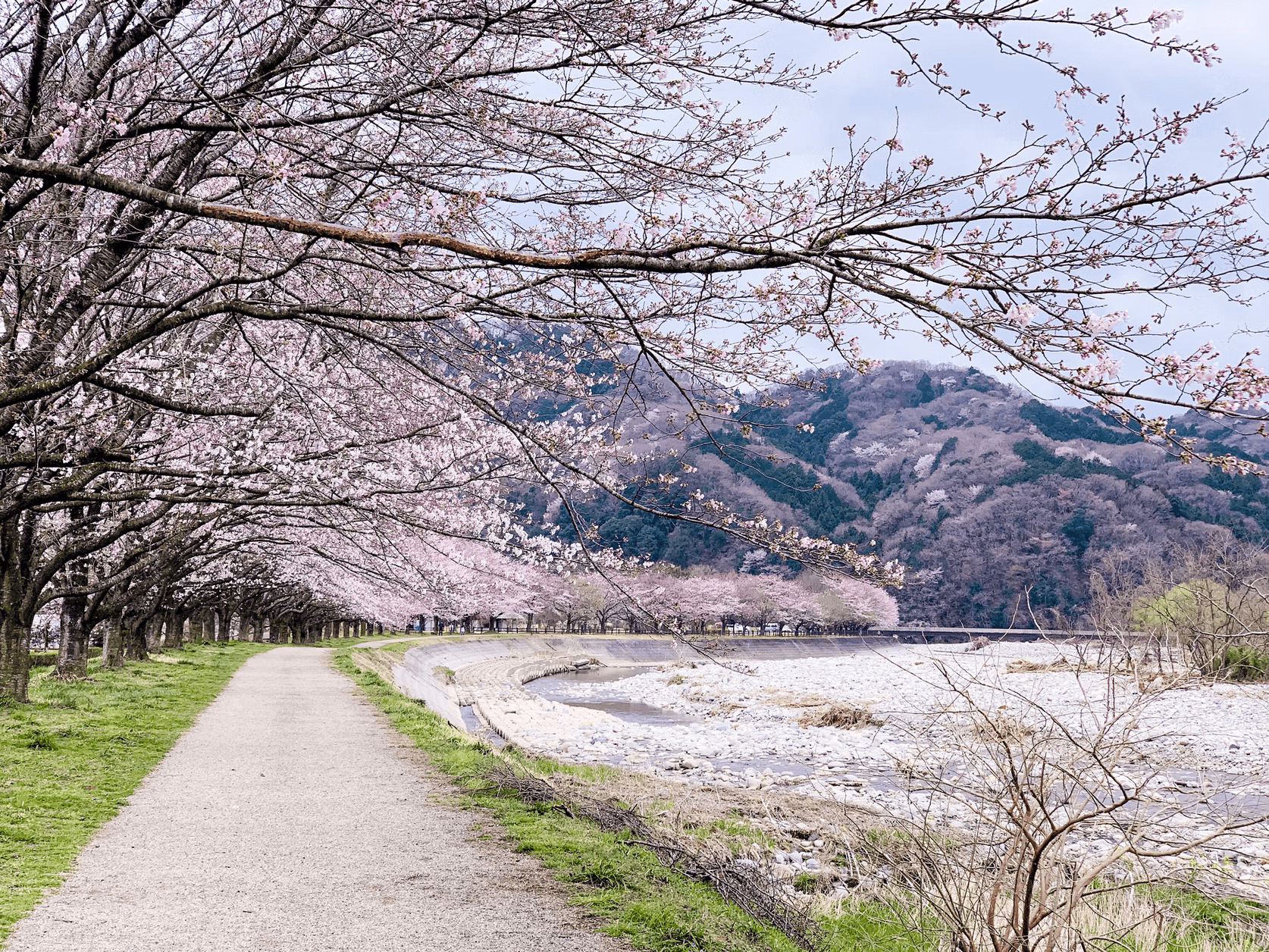
Image credit: Akira Deng
2. Don’t leave any garbage behind
Leave the park or garden the way you found it. Ensure that your trash is appropriately disposed of when you leave. Some parks do not have any garbage bins – if they do, they are few and far between. We recommend keeping your trash with you, until you find a garbage bin or when you get home.
3. Check the rules of the park before you visit
Different parks have different restrictions; some do not allow barbequing, some don’t allow visitors to imbibe alcohol, others have a curfew. So be sure to do your research before heading down for your hanami parties.
Philosophy behind cherry blossoms
So why are cherry blossoms so important to the Japanese? There’s actually quite a deep meaning behind the seemingly simple flowers.
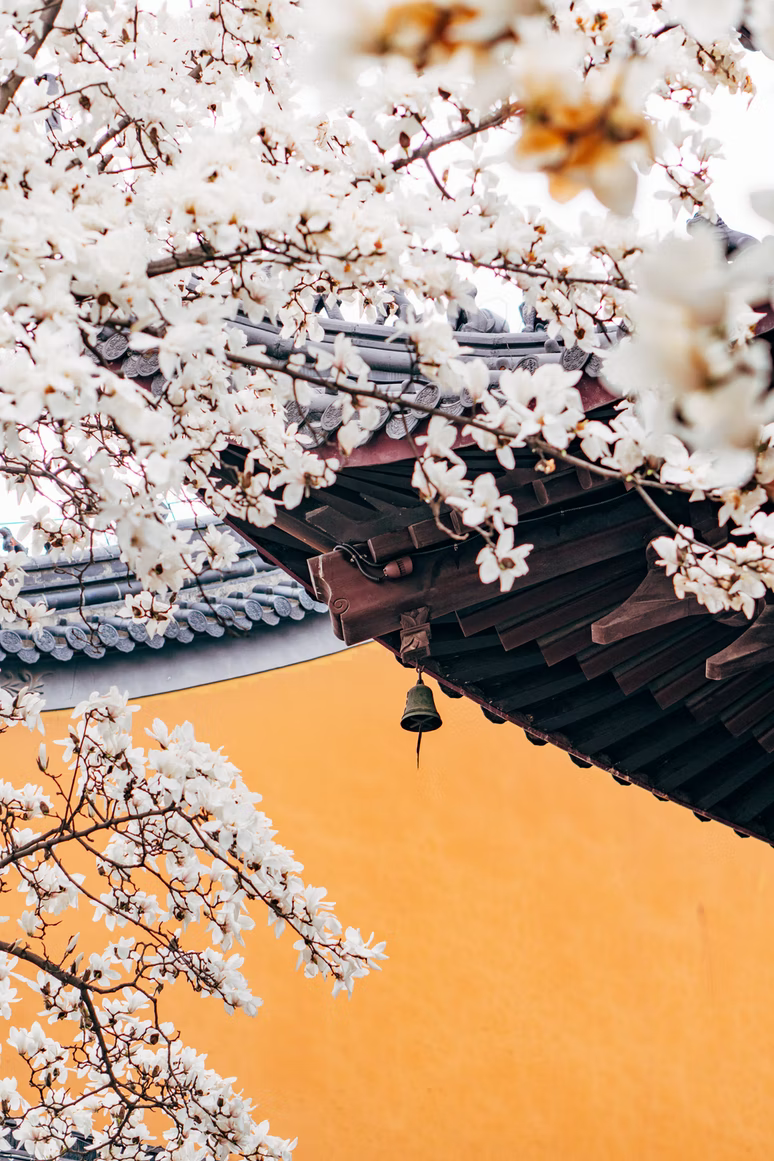
Image credit: Xianyu hao
As mentioned previously, cherry blossoms are notoriously fragile and have a very short blooming season. To the Japanese, these pink blooms are representative of the fragility and transience of life, embodying the Buddhist themes of mindfulness, mortality, and living in the present.
Some even believe that cherry blossoms can be used as a metaphor for human life – fleeting, but memorable all the same.
Cherry blossom season in Japan
Cherry blossom-viewing is something everyone should have a chance to see at least once in their life, and we hope that this guide will help you have an enjoyable time under the sakura trees.
Also check out:
- 9 Cherry blossom spots in Tokyo
- 13 Cherry blossom season things to do
- Kirby Cafe in Japan
- McDonald’s Japan releases sakura mochi pie
- Kawachi Wisteria Garden
Cover image adapted from: Redd, Go Tokyo, and @ena.5.1.t

Drop us your email so you won't miss the latest news.


